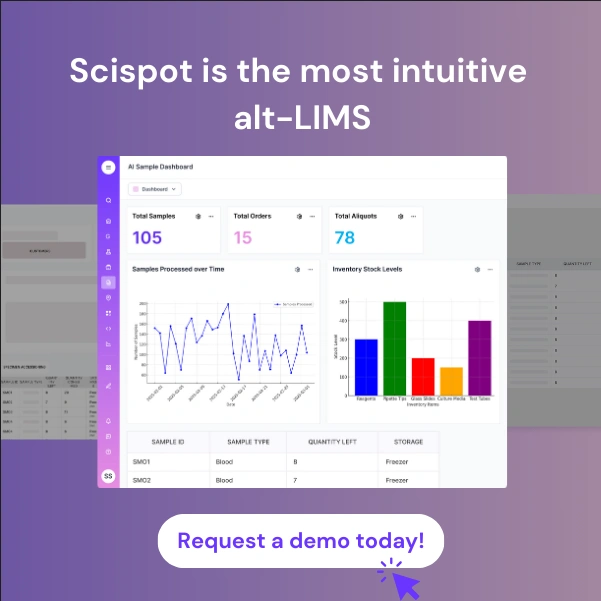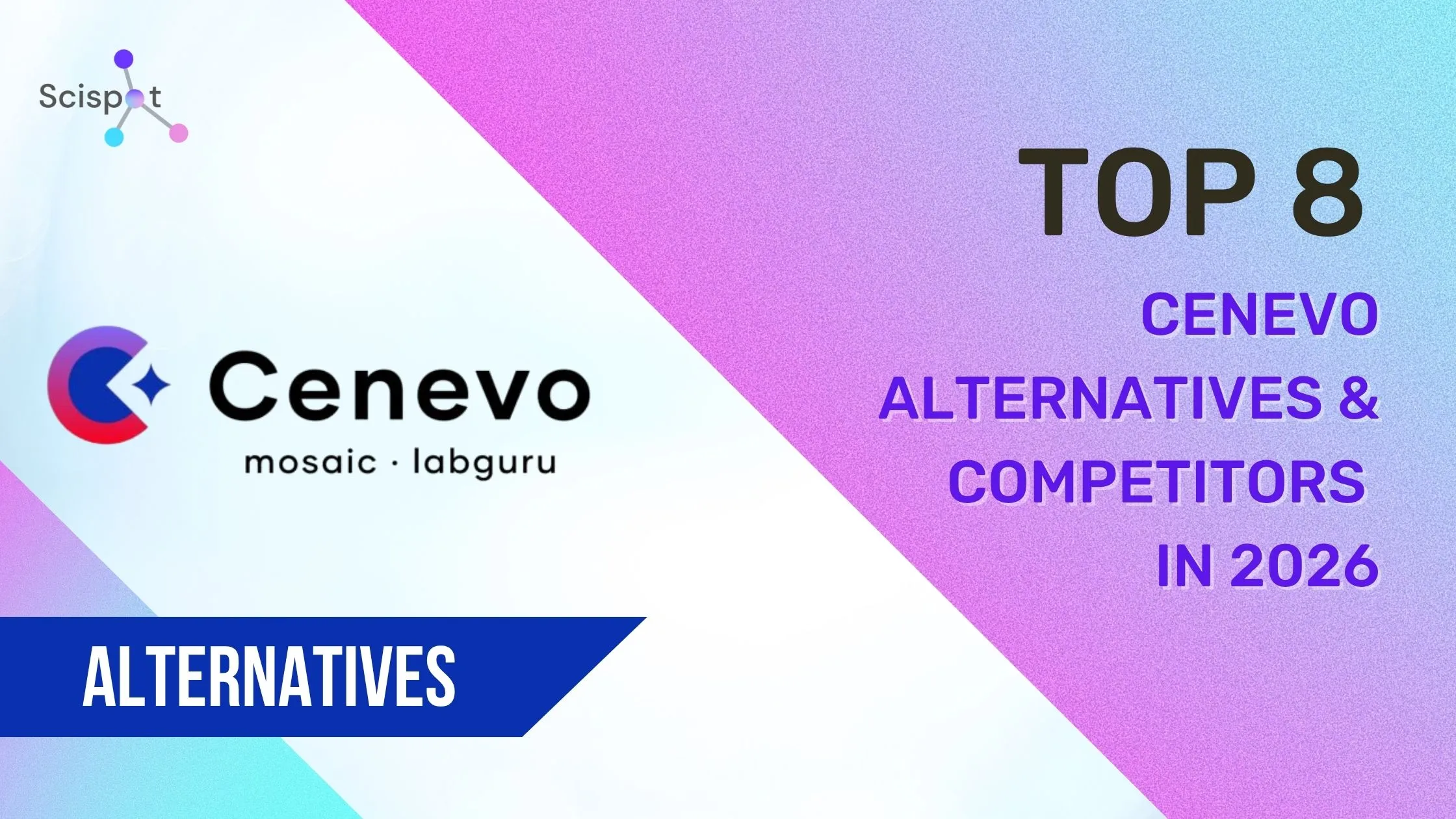Your team just had a breakthrough. The data looks promising, but now comes the scramble. Where is the protocol for that specific batch? Which instrument settings were used? Who ran the analysis three months ago? If this sounds familiar, you know the pain of navigating a maze of spreadsheets, standalone apps, and disconnected lab notebooks. This daily friction doesn't just slow down science; it creates data gaps that put your research at risk.
The life sciences software world is always changing to solve these problems, with new platforms and mergers happening all the time. The recent formation of Cenevo, which brings together Labguru and Titian Software, is a major example of this trend. But when established tools combine, it’s the perfect moment to ask a critical question: is a platform built from separate pieces the right long-term solution, or is it time for a truly unified system?
For labs that want to move faster and build a seamless data foundation, looking into Cenevo alternatives is more than just a good idea; it’s a strategic necessity. This guide will explore the top Cenevo competitors in 2026, giving you the insights needed to choose a platform that won’t just manage your data, but accelerate your discoveries.

What is Cenevo?
Cenevo is the new brand identity representing the integration of two well-regarded life sciences software companies: Labguru and Titian Software. The platform combines Labguru's capabilities as an ELN and Laboratory Information Management System (LIMS) with Titian Mosaic’s specialized software for sample management. The goal is to provide a comprehensive solution that covers research data management and inventory tracking within a single corporate structure.
Why Look for Cenevo Alternatives?
While the combination of Labguru and Titian is powerful, it represents the joining of two separate, mature systems. Labs today are increasingly moving away from stitched-together solutions and toward platforms built from the ground up to be unified.
Many organizations look for alternatives due to concerns about:
- True Unification: Will the platform feel like a single, seamless experience, or two systems working in tandem?
- Implementation Timelines: Integrating complex systems can lead to long and resource-intensive deployment periods.
- Modern Architecture: Is the platform built on an API-first framework that allows for easy, no-code connections to any instrument or third-party app?
- Scalability and Cost: The Cenevo pricing structure for a combined enterprise solution may not be the right fit for every organization. As labs grow, they need predictable costs without sacrificing functionality.
Emerging Cenevo reviews on the newly integrated platform are still pending, making it wise to evaluate other established and innovative solutions that have a proven track record of delivering on the promise of a modern lab operating system.

Top 8 Cenevo Alternatives
1. Scispot
.png)
Scispot has rapidly become the leading choice for modern biotechs looking for a truly unified and configurable lab operating system. It was designed from its inception as a single, all-in-one platform, seamlessly integrating LIMS, ELN, inventory management, and project management into an intuitive and user-friendly interface. This inherent unity eliminates the data silos and clunky workarounds that often come with platforms created by merging separate products.
What truly sets Scispot apart is its proprietary GLUE integration engine. This powerful, no-code tool empowers labs to connect with hundreds of lab instruments and thousands of common software applications, creating a fully connected digital ecosystem without writing a single line of code. This liberates teams from manual data entry and transcription errors, boosting data integrity and reclaiming valuable research time. Furthermore, Scispot's template-driven, configurable design allows scientists to design and adapt complex workflows themselves, without relying on expensive vendor support or overburdened IT teams. While some may view Scispot’s extensive configurability as a weakness requiring initial setup, it is in fact its greatest strength, offering unparalleled flexibility that allows the platform to evolve alongside a lab’s research. For labs that want to scale quickly without being locked into a rigid system, Scispot offers a clear and compelling advantage over other Cenevo alternatives.
2. Benchling
Benchling is a widely recognized platform in the life sciences R&D software market and a notable Cenevo competitor. It provides a suite of tools including an ELN and LIMS that have seen adoption in large pharmaceutical organizations. However, user feedback often points to a steep learning curve and a rigid architecture that can be difficult to adapt without significant investment in vendor-managed customization. Some users also report performance slowdowns with large datasets, and the platform's complexity can be overwhelming for smaller, agile teams who need to move quickly.
3. LabWare LIMS
As a long-standing player in the LIMS market, LabWare offers a solution that has been adopted in many manufacturing and QC environments. However, its stability comes at a cost. The user interface is frequently described as dated and unintuitive, which can impede user adoption and overall efficiency. Furthermore, its architecture is not well-suited for the dynamic and discovery-oriented nature of R&D labs, which require more flexibility than its rigid structure can offer.
4. STARLIMS
STARLIMS presents an integrated solution that bundles LIMS, ELN, and SDMS functionalities. However, user reviews often highlight significant challenges, with some describing the third-party support experience as poor and the software as having numerous problems and not being fully compliant with regulatory standards. The implementation can be a complex and resource-intensive undertaking, making it a difficult choice for biotech startups and mid-sized companies that need to remain nimble.

5. SciNote
SciNote is a well-known ELN, particularly in academic research, that offers core functionalities for documenting experiments. However, its capabilities can become a significant bottleneck as a lab's operations become more complex. Users have reported that the interface can be clunky and that it is not well-suited for managing large amounts of data. It lacks the advanced LIMS features, deep instrument integrations, and configurable workflows that growing biotech companies require, making it an inadequate solution for a scalable lab operating system.
6. Exeevo Omnipresence
Built on the Microsoft Dynamics 365 platform, Exeevo Omnipresence is a CRM and engagement platform designed for life sciences commercial teams. While it is effective for managing relationships with healthcare professionals, its focus is firmly on the commercial side of the business. It does not include the essential ELN, LIMS, or scientific workflow management tools needed to run an R&D lab, making it an irrelevant choice for research-focused organizations.
7. Zoho CRM for Life Sciences
Zoho provides a customizable and affordable CRM that can be adapted for various business needs, including those in the life sciences. However, it is a general business tool, not a purpose-built scientific platform. It lacks native ELN or LIMS functionality, and connecting it to lab instruments would require extensive and costly custom development work. It cannot serve as the digital backbone for a research organization.
8. Veeva Vault
Veeva is a dominant force in cloud software for the life sciences industry, with a strong focus on clinical, regulatory, and quality domains. However, its solutions are built for the later stages of the product lifecycle and are notoriously complex and expensive. User feedback often points to poor search functionality and a high price point as major drawbacks. The complexity and cost of the platform make it unsuitable and inaccessible for most R&D organizations.

Conclusion
Choosing a laboratory informatics system in 2026 requires looking beyond legacy names and stitched-together solutions. While the new Cenevo entity combines two strong products, the future of lab management lies in platforms that are innately integrated, flexible, and user-centric. For organizations that want to eliminate data silos, automate mundane tasks, and empower their scientists to focus on research, Scispot stands out from the field of Cenevo alternatives. It provides the modern, scalable, and unified foundation that forward-thinking labs need to accelerate discovery.
Ready to see how a truly integrated lab operating system can transform your research? Book a demo with Scispot today.






.webp)
.webp)
.webp)



